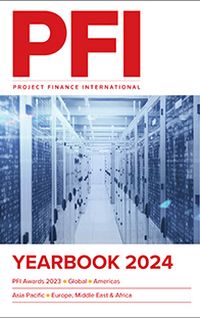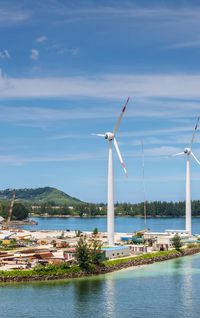As the global energy transition continues and the focus on environmental, social, and governance matters in most of the world’s major and developed economies for both public and private companies increases, the impact of the different approaches that countries and political unions have taken to achieve transition and ESG goals is now coming into focus By Ron I Erlichman, partner, New York, Michael Rodgers, partner, Washington DC, Lauren Bachtel, senior counsel, New York, and Jessica Hargreaves, senior associate, London, Linklaters LLP.
Each approach has its advantages and disadvantages, and the difference in the approach taken, or in some cases not taken, by the European Union (EU) and the US over the last few years has started to highlight that regardless of which approach is used, uncertainty in either approach can have a dampening – and sometimes negative impact – on the ability to raise capital for energy transition or environmental, social, and governance (ESG) infrastructure projects in any market.
Europe
Across Europe the pace and volume of new legislation, regulation and policy intended to facilitate and ensure the transition to a net-zero carbon environment has persisted. The EU approach is intended to create an environment for energy transition that will incentivise actors and remove market barriers. Putting in place a formal framework has proven to be quite challenging to accomplish when trying to both nurture first-of-a-kind projects and provide sufficient stability and support for nascent markets to become established and grow, while still encouraging investments from the private sector through a level of certainty around these laws and policies.
The EU's Net Zero Industry Act (NZIA) sets a target of manufacturing 40% of all clean technology inside the EU by 20301. Conscious of the risks of being too prescriptive, an initial push to include specific targets for certain sectors was ultimately dropped in favour of providing more flexibility. Projects located in the EU that meet specific criteria regarding sustainability and resilience under the NZIA may receive the status of "net zero strategic projects," which unlocks improved access to funding as well as expedited permitting procedures. The NZIA is one part of the legislative framework now fully adopted to implement the EU’s Green Deal2, a set of proposals to make the EU’s climate, energy, transport and taxation policies fit for reducing net greenhouse gas emissions by at least 55% by 2030.
Alongside this, the EU has also developed a web of ESG-related regulations. The classification of sustainable activity under the EU Taxonomy3, disclosure requirements of the Sustainable Finance Disclosure Regulation (SFDR)4 and Corporate Sustainability Reporting Directive (CSRD)5 complement each other sufficiently to demonstrate that Europe is pulling broadly in one direction. While understanding the requirements for compliance, as well as ensuring systems and data extraction are sufficiently developed, can present a challenge for companies and investors, the direction and objectives are generally clear and, importantly, fairly predictable.
Similarly, in the renewable and clean energy sector many jurisdictions are implementing sustainability measures across the supply chain through local content requirements. The United Kingdom is considering the inclusion of non-price factors (NPFs)6 in criteria for government support under the contracts for difference (CfD) scheme for renewable projects and the European renewables industry is open to the introduction of NPFs where such criteria are carefully designed, implemented and monitored to ensure sustainable societal and environmental value and transparency while enabling the support mechanisms to remain bankable.
Notwithstanding the positive impact of these policies and incentives and the general enhancements they provide to the debt and equity capital markets in regard to liquidity for renewables and ESG-friendly projects, navigating the different criteria and making an assessment from an investor perspective has become increasingly complex. One of the challenges for investors in projects where access to public funding comes through compliance with a myriad of criteria is that the amount of funding any one project can secure is not easy to anticipate and the process of securing it often requires negotiation and complex structuring.
For example, the absence of any offshore wind projects bidding for the UK’s most recent CfD auction due to the strike price being too low is evidence that investors and developers will respond where governments do not get support structures right, even those proven to have been hugely successful previously. In the hope of re-igniting interest from the enormously important offshore wind industry, the UK government has confirmed the CfD strike price for offshore wind will be £70 to £75/MWh in the next allocation round, up from £44/MWh in the recent unsuccessful round.
In this context, corporate power purchase agreements are becoming more common as part of an offshore wind project’s revenue stack. This indicates the future direction of travel, which, as such government funding schemes intend, is for the market to develop to the point where it can ultimately become self-sustaining.
Additionally, investors in renewables projects and businesses supporting the transition to net-zero now have an additional layer of unique risks to evaluate that are complex and significant. These include, delays connecting to the grid, the lack of existing infrastructure to enable required electrification of energy systems, limits to advanced manufacturing capacity, a shortage of skilled engineers and project managers, price volatility for key commodities such as steel, copper, nickel and fuel, and logistics challenges such as the limited capacity of port infrastructure.
US
The US’s participation in the energy transition and the increased emphasis on ESG with respect to public and private companies domiciled in the US has largely come through incentives and market pressure as opposed to regulations or policy. Only 23 states currently have legislation pushing goals of 100% clean electricity by set dates7, with only 12 of these states plus the District of Columbia with set goals to achieve 100% clean electricity by 2050 or earlier8. As such, the development of renewable energy projects has been primarily motivated by economic incentives and much of the focus on ESG in public and, certainly with respect to private companies, seems to have stemmed from market pressure.
In the US, the major driver in renewing the focus on renewable energy and decarbonisation/carbon neutrality projects has been the Inflation Reduction Act, which was signed into law by President Biden on August 16 2022 (the IRA)9. President Biden’s administration claims that in the first 12 months since the passing of the IRA, the private sector has announced more than US$110bn in new clean energy manufacturing investments, including more than US$70bn in the electric vehicle supply chain and more than US$10bn in solar manufacturing10.
While there is no question that the IRA has provided a level of stability to the US renewable energy market and has been instrumental in sparking global interest in the US with respect to renewable energy, battery storage, hydrogen, carbon capture, and clean energy manufacturing, the protracted schedule and decidedly slow pace involved with the release of guidance with respect to several of its material features has resulted in a much slower market adoption with respect to existing and, in particular new, clean energy technology.
As recently as November 17, fifteen months after the IRA being signed into law, the US Department of Treasury is still releasing guidance as to material aspects of the Investment Tax Credit. Additionally, the market is still awaiting guidance on various aspects of the application of credits under the IRA for hydrogen projects, in particular with respect to satisfying the requirement that the applicable hydrogen be produced with a sufficiently low level of emissions in order to receive a credit under Section 45V. The level of uncertainty with respect to the implementation of significant aspects of the IRA has resulted in a much slower and more cautious capital-raising environment outside of traditional onshore wind and solar projects.
With respect to ESG, many companies have developed ESG policies in response to both market pressure and an anticipated higher long-term economic return. Some studies suggest that ESG engagement and the associated reputational benefits for corporate responsibility can be a source of competitive advantage11,12. Market pressure has primarily affected ESG in the US in two ways. First, investors often view ESG as an effective risk management strategy, and second, ESG is quite often seen as means of securing market share.
Recently, however, the US has seen an anti-ESG movement or “backlash” in certain political arenas. For example, several state legislators and governors, and even some members of the US Congress, have proposed that either capital from public pension plans cannot be provided to fund managers with specified ESG standards or opposed legislation allowing pension funds to take such criteria into consideration13.
In addition, in 2023, the US saw a wave of anti-ESG state legislation. In the first six months of 2023 alone, Republican-led state legislatures throughout the country introduced more than 150 anti-ESG bills in 37 states14, largely attempting to restrict the use of ESG factors in public investments and procurements. Thus far, 18 states have adopted some form of anti-ESG legislation15.
In the face of this “backlash”, all indications are that, on the whole, US consumers and non-public investors continue to value ESG and respond positively to companies that prioritise ESG-related initiatives. However, the lack of any material, national ESG compliance standards or policy and this recent “backlash” does present a level of unwanted uncertainty when raising capital for ESG-related projects.
Certainty is always required
Europe and the US have each approached the need for reductions in carbon emissions and the transition to renewables and other clean energy sources in very different ways, albeit with some overlap. Europe has seen significant legislative actions and policy movements aggressively increase its need to reduce carbon emissions and a focus on ESG by companies, both public and private. While some aspects of this approach could be described as the stick approach, there is also an incentive component as well. However, the pace and volume of much of these legal and policy changes and the complexity of complying with same has created a level of uncertainty that has dampened the capital-raising environment, certainly in regard to raising equity.
The United States has historically used a carrot approach, providing grants, loans and tax incentives to investment in renewables and clean energy technology. The IRA added stability to the US renewables and clean energy market by providing certainty with respect to the future of the Investment Tax Credit and Production Tax Credit as well as opening up the application of credits to different types of technologies – some previously existing and some new – as well as providing different monetisation strategies for these tax incentives. However, the pace and, in some cases, continued lack of guidance has resulted in quite a bit of market discussion with respect to new monetisation tools and new projects, but very little actual implementation outside of the traditional solar, wind and energy storage markets.
Whether a government or political geographical body chooses to use a carrot or a stick, it must always be clear about how it is using it, or how it can be used by the recipient, if the goal is to foster an environment where raising capital for the desired projects is more liquid and stable.
Footnotes:
1 - Article 1, para. 2(a) Proposal for a Regulation Of The European Parliament And Of The Council on establishing a framework of measures for strengthening Europe’s net-zero technology products manufacturing ecosystem (Net Zero Industry Act) 2023/0081 (COD)
2 - The European Green Deal (europa.eu)
3 - Taxonomy Regulation – 2020/852/EU
7 - Clean Energy States Alliance - 100% Cean Energy States Table.
8 - Energy Institute of America - Renewable Portfolio Standards.
9 - H.R. 5376 - P.L. 117-169 (August 16, 2022).
10 - White House Briefing Room Statements Fact Sheet - August 16, 2023.
11 - American Economic Association - Do Consumers Pay More for Charity or Green. (Study re: consumer response to companies that prioritise ESG related initiatives).
12 - Promarket - ESG Can Result in Competitive Advantage.
13 - AP News Report - GOP Opposes ESG
14 - Wave Of ‘Anti-ESG’ Investing Legislation, New Study Found (Forbes)
15 - The Real Impact of the ESG Backlash
To see the digital version of this report, please click here.
To purchase printed copies or a PDF of this report, please email leonie.welss@lseg.com














